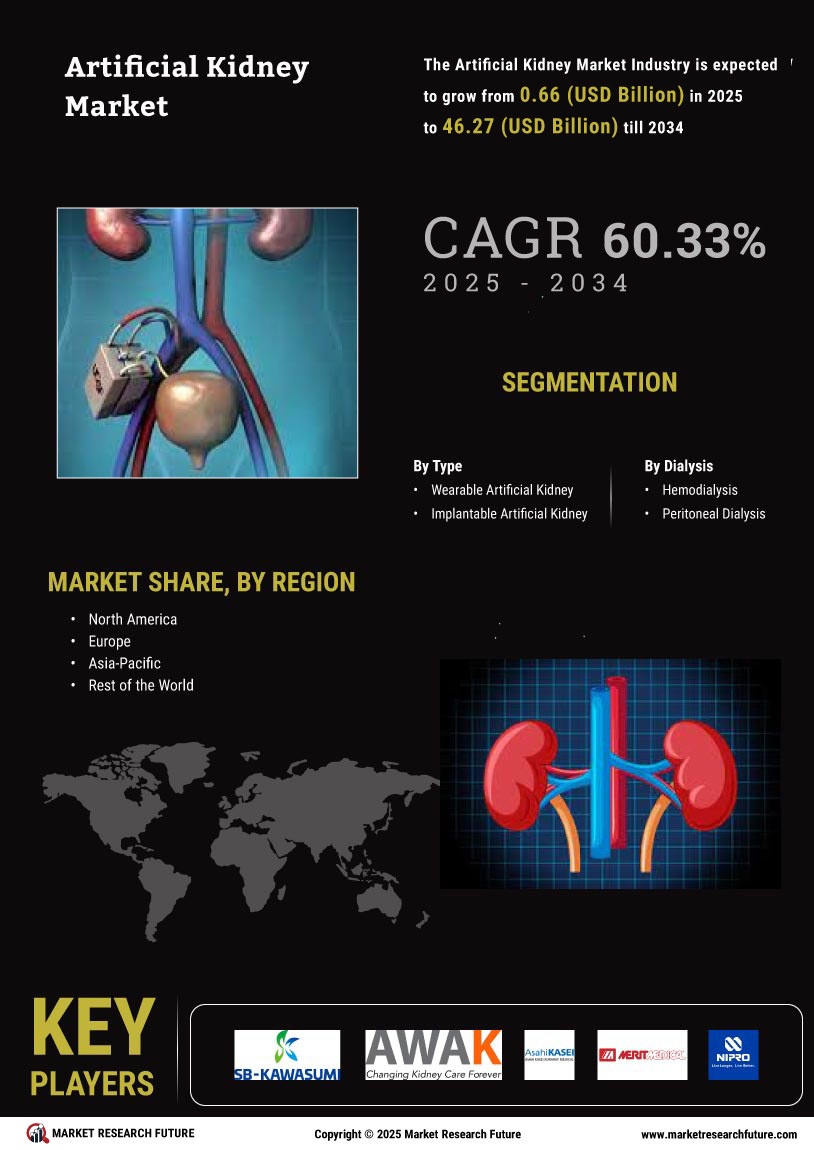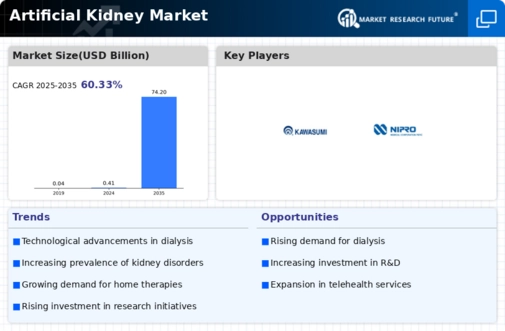Market Growth Projections
The Global Artificial Kidney Market Industry is poised for remarkable growth, with projections indicating a rise from 0.41 USD Billion in 2024 to an astounding 74.2 USD Billion by 2035. This trajectory suggests a compound annual growth rate of 60.41% from 2025 to 2035, reflecting the increasing demand for innovative renal therapies. Factors such as the rising prevalence of kidney diseases, technological advancements, and supportive government policies are likely to contribute to this growth. The market's expansion may also be influenced by the aging population and the shift towards home-based dialysis solutions, creating a dynamic landscape for artificial kidney technologies.
Government Initiatives and Funding
Government initiatives aimed at improving healthcare infrastructure significantly impact the Global Artificial Kidney Market Industry. Various countries are increasing funding for kidney disease research and treatment options, recognizing the burden of renal diseases on public health. These initiatives often include grants for innovative medical technologies and subsidies for patients requiring renal replacement therapies. Such support fosters an environment conducive to the development and adoption of artificial kidneys. As governments prioritize healthcare advancements, the market is likely to benefit from enhanced accessibility and affordability, further driving growth in the coming years.
Rising Prevalence of Kidney Diseases
The increasing incidence of chronic kidney diseases globally drives the Global Artificial Kidney Market Industry. According to health statistics, millions of individuals suffer from various forms of kidney ailments, necessitating advanced treatment options. The demand for artificial kidneys is likely to surge as healthcare systems strive to manage this growing patient population. In 2024, the market is projected to reach 0.41 USD Billion, reflecting the urgent need for innovative renal therapies. As awareness of kidney health expands, the market could see significant growth, potentially reaching 74.2 USD Billion by 2035, indicating a robust trajectory for artificial kidney technologies.
Aging Population and Increased Healthcare Demand
The global demographic shift towards an aging population is a critical driver of the Global Artificial Kidney Market Industry. Older adults are more susceptible to kidney diseases, leading to a higher demand for renal replacement therapies. As the population aged 65 and older expands, healthcare systems face mounting pressure to provide effective treatments. This demographic trend is likely to contribute to the market's growth, as artificial kidneys become essential in managing age-related renal issues. The projected market growth from 0.41 USD Billion in 2024 to 74.2 USD Billion by 2035 reflects the increasing healthcare demand associated with an aging society.
Patient Preference for Home-Based Dialysis Solutions
There is a growing preference among patients for home-based dialysis solutions, which significantly influences the Global Artificial Kidney Market Industry. Patients increasingly seek autonomy and convenience in managing their health, leading to a shift towards portable and user-friendly artificial kidney devices. This trend is driven by advancements in technology that enable effective home dialysis, reducing the need for frequent hospital visits. As a result, manufacturers are focusing on developing devices that cater to this demand. The market's evolution in response to patient preferences may contribute to its substantial growth in the coming years.
Technological Advancements in Renal Replacement Therapy
Innovations in medical technology are reshaping the Global Artificial Kidney Market Industry. Recent advancements in bioengineering and nanotechnology have led to the development of more efficient and biocompatible artificial kidneys. These devices are designed to mimic natural kidney functions more effectively, improving patient outcomes. The integration of artificial intelligence in monitoring and managing renal health further enhances treatment efficacy. As these technologies evolve, they are expected to attract investment and research, potentially propelling the market forward. The anticipated compound annual growth rate of 60.41% from 2025 to 2035 underscores the transformative potential of these advancements.













